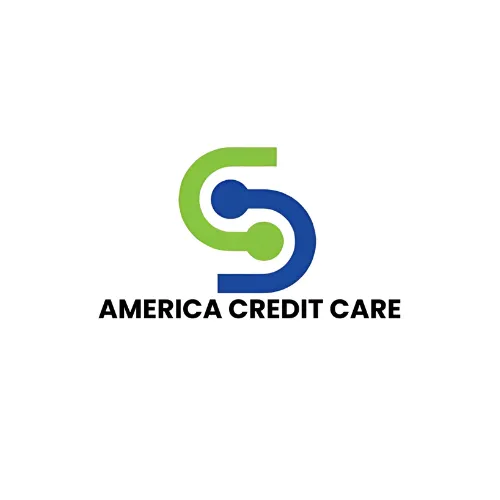Blog
Contact Us
At Credit Care of DMV, we don’t just repair, but also educate people about credit so that they never find themselves in that same situation in life.

Why DIY credit fixers often fail to achieve good scores?
Most DIY credit-fix efforts fail because people focus on disputing items instead of changing the behaviors and balances that drive scores, and because accurate negative marks can’t be deleted. So, merely filing multiple credit disputes, and that too without necessary documentation, won’t move the needle.
DIY credit fixers often run into process and documentation gaps that lead to “verified as accurate” outcomes while their balances and payment behavior continue to drag scores down.
Let’s look at the main reasons why DIY credit fixes often fail to achieve (and maintain) good credit scores:
#1. DIY credit fixers chase deletions instead of score math
FICO/VantageScore models attach maximum importance to your payment history and amounts owed; payment history, for instance, contributes about 35% and utilization roughly 20–30% when credit scores are calculated.
Often, DIY credit fixers continue to ignore on‑time payments and high revolving balances. Credit score gains through successful disputes, if any, eventually fail to make a significant difference.
Even perfect disputes won’t offset the score drag from maxed‑out cards; lowering utilization below common thresholds, such as 30% delivers predictable point improvements compared with letter campaigns alone.
#2. They often misread what can legally be removed
The Fair Credit Reporting Act (FCRA) requires reasonable investigations, not automatic deletions of late payments and other derogatory marks from your credit report; accurate information generally stays on your credit report until it falls off.
So, when DIY credit fixers try to dispute accurate late payments, collections, or bankruptcies, their efforts, no matter how persistent, rarely result in the successful removal/deletion of a negative mark.
Regulators have warned that CRAs and furnishers cannot impose unlawful hurdles to investigating disputes. However, consumers do need to present relevant facts and documents; when DIY credit fixers submit disputes without sufficient evidence, outcomes generally default to verified reporting.
This is among the chief reasons why people hire legitimate companies that fix credit.
Professional credit repair services like AMERICA CREDIT CARE differentiate themselves from DIY credit fixers by following systematic credit restoration processes.
Book Your FREE PERSONAL CREDIT CONSULTATION Today!
#3. DIY credit fixers submit weak documentation and have poor process control
Many DIY credit dispute filers don’t attach billing statements, payment proofs, identity theft reports where relevant, or contemporaneous correspondence.
In other words, they undermine “reasonable investigation” outcomes under FCRA standards.
Yes, credit bureaus and information furnishers like lending institutions must investigate disputes that meet statutory requirements, but they commonly close cases with an explanation absent compelling evidence.
In 2024, firms provided timely responses to over 99% of complaints, yet relief rates remained limited across categories.
#4. They use template letters and rely on shotgun disputes
Non‑specific, template-based dispute letters risk being classified as frivolous or irrelevant when they lack details tied to the tradeline and credit report error. Many DIY credit fixers simply find dispute letter templates online and use them to submit disputes to the credit reporting agencies.
Generic “delete everything” approaches ignore that bureaus forward all relevant documentation to furnishers; without precise exhibits and narratives, furnishers simply re‑verify their Metro 2 data, and the derogatory item remains on a credit report.
#5. DIY credit fixers deploy wrong tactics for the product type
Statistically, outcomes of credit disputes tend to differ by product category.
The CFPB’s dispute‑flag analysis, for instance, explicitly documents that disputes related to -
Auto loans tend to move toward closures - More than 40% of auto loan accounts with dispute flags end up closed within four years of the dispute flag appearing, often due to loan maturity or reporting corrections rather than deletion. About 17% of disputed auto loans were already closed at the time the dispute flag first appeared, and another 4% closed in the first quarter after the flag appeared. These statistics underscore how closures accumulate quickly relative to deletions in this category
Student loans in certain dispute contexts are likely to be resolved and result in deletions - About 40% of student loan tradelines with dispute flags were deleted within four years, though the report notes that some apparent deletions reflect consolidation or reporting transfers rather than classic “error-corrected” deletions; deletions were roughly 30% more common for disputed student loans than for non‑disputed student loans. Roughly 13% of student loans with dispute flags were deleted in the very next quarter after the flag first appeared. This means a subset of student debt deletions is tightly time‑linked to the dispute process or correction of attribution errors.
General‑purpose credit cards are more likely to move toward dispute-flag removal while the account stays open (no deletion) - A large share of disputed general‑purpose card tradelines end with the dispute flag removed while the account remains open, consistent with disputes that target specific charges or small data elements rather than the tradeline itself. Because the tradeline typically persists, utilization, age, and payment history effects remain in play even after the dispute flag disappears. For significant score improvement, this means you need to pay attention to balance and payment management, besides filing disputes for general-purpose card accounts.
Retail credit cards are far less likely to remain open (closed or deleted) - Compared to general‑purpose cards, retail card tradelines with dispute flags are significantly less likely to remain open with only the flag removed; instead, they are more likely to be closed or deleted. It's indicative of different furnishing and consumer usage patterns in private‑label portfolios.
Collections marks generally experience higher churn - Before recent policy changes, as much as one‑quarter of medical collections tradelines were removed within six months of appearing. Removal and reappearance cycles (churn) are common due to reassignment between collectors and varied reporting durations. Another CFPB report revealed that fall‑off rates differ by collection type; medical collections have lower fall‑off than telecom and certain other categories.
Since many DIY credit fixers use identical tactics across different products, they are likely to experience a mismatch between expectations and results.
Book Your FREE PERSONAL CREDIT CONSULTATION Today!
#6. DIY fixers tend to make timing mistakes that erase their gains
Opening new lines of credit hurts your credit score in the short run. Hard inquiries shave a few points each, and new accounts lower the average age.
Those trying to fix credit report errors on their own often do not realize that stacking applications can sink scores even as you pay down balances; FICO treats “new credit” as a distinct factor and groups rate‑shopping inquiries, but multiple card/loan apps still weigh negatively for up to 12 months.
Similarly, shutting seasoned lines shortens credit history and can spike utilization by shrinking total limits. It results in a double hit that offsets any dispute wins.
#7. Many ignore complaint‑volume realities when filing credit disputes
Credit reporting dominates federal complaint data in the United States. The CFPB received about 3.19 million complaints and forwarded ~2.83 million to companies in 2024; roughly 85% of these complaints were related to credit/consumer reporting.
When the funnel is so crowded, it's not difficult to understand why cursory disputes filed by DIY credit repair enthusiasts face long queues and standardized responses. In other words, many such cases resolve as “verified” or “closed with explanation,” not deletions or corrections
With this scale, only detailed, evidentiary submissions submitted by experienced credit repair specialists tend to achieve corrections, while cursory disputes are closed with explanation and no change.
#8. DIY fixers may celebrate the wrong outcome
A “closed” account still reports and affects age and payment history. A “flag removed” simply means that the dispute indicator has been updated while the item remains on your credit report.
Only a “deleted” status update successfully removes the tradeline, and deletion is generally reserved for inaccurate, unverified, or outdated data.
Failure to understand the difference between the endpoints—“closed,” “deleted,” and “resolved”—leads to false victory laps.
#9. Underestimating utilization tactics
Ratios matter at two levels: Credit scoring models look at both per‑card and aggregate utilization; crossing common thresholds (e.g., under ~30%, then into teens or single digits) can unlock sizable gains versus chasing credit disputes alone.
Precision credit score improvement tactics like staggering payments before statement cuts and spreading balances are often missing in DIY credit repair plans.
Paying before statement cut dates lowers reported balances, and spreading balances across limits can optimize ratios without new credit; adding new limits can help later, but not while scores are fragile.
Raising limits judiciously or adding a low‑limit, low‑APR line after core negatives stabilize can drop utilization ratios, but mistimed applications can backfire by adding inquiries and shortening age metrics.
#10. No parallel path on positive data
You must outvote negatives to achieve and maintain a good credit score. This is why experienced credit repair service providers recommend building a fresh on‑time history with open tradelines.
DIY credit fixers don’t realize that in certain cases, programs like adding verified utility/telecom payment history can lift scores faster than waiting for disputes to play out.
Without rebuilding activity, negative items may continue to dominate the model’s view; consistent on‑time activity with systematic, professional credit repair is the most reliable driver of sustained score gains over 6–12 months.
#11. Skipping identity theft and direct furnisher routes
When fraud is involved, identity theft procedures and blocking rights can compel quick removal of a late payment, collection, charge-off, or other derogatory mark from a credit report.
However, failing to file police/FTC reports or to dispute directly with furnishers under FCRA undercuts relief options.
This is why professional credit restoration service providers don’t skip direct disputes in such cases.
The FCRA requires furnishers to investigate proper direct disputes, not just bureau‑forwarded ones; sending detailed evidence to both channels increases the odds of correction. Bypassing this path leaves the decision solely to the bureau’s indirect process.
#12. Setting unrealistic timelines and expectations
Many accurate negative marks legally persist up to seven years. Often, people trying to fix bad credit with DIY credit repair methods expect rapid deletions, ignore statutory aging periods, and bureau policies. For many do-it-yourself credit disputes, this leads to churn and frustration rather than structured remediation.
Disputes do help when there’s provable inaccuracy. But, the most consistent gains come from 90–180 days of perfect payments and significant balance reduction, combined with targeted, professional credit repair, and not from serial disputes over accurate items.
Credit Repair: Action List to Achieve Tangible Results
Audit and triage: Pull all three bureau reports, mark derogatories by type, and align tactics to the most probable outcome by product category.
Evidence‑driven disputes: Attach bills, receipts, statements, correspondence, police/FTC identity theft reports where applicable; file with both bureaus and furnishers, and calendar 30–45 day follow‑ups.
Score drivers first: Pay all accounts on time, drive aggregate utilization under 30% and ideally under teens on each card; avoid new inquiries until balances are down and disputes concluded.
Build positives: Add responsible, low‑cost tradelines and consider permitted alternative data programs to thicken files alongside resolving negatives.
Hire Professional Credit Repair Services
When it helps most:
Consider pros like AMERICA CREDIT CARE if you face complex identity theft, mixed/merged files, persistent furnisher disputes despite evidence, or multi‑bureau inaccuracies that keep getting “verified” without correction post DIY credit repair.
These are high‑friction scenarios where legal and procedural expertise saves time and prevents errors.
What legitimate credit repair companies actually do
Perform tri‑bureau audits
Map each derogatory to the correct furnisher and Metro 2 fields
Build evidence‑backed disputes
Escalate through the bureau and the furnisher channel
Coordinate identity theft/blocking procedures where applicable
Expect cadence‑based follow‑ups, not one‑and‑done letters
Book Your FREE CREDIT CONSULTATION. Talk to a Credit Repair Specialist Today!
What credit repair companies can’t do
No one can legally remove accurate, timely negatives. Guard against promises of guaranteed deletions, new identity/CPN schemes, or pay‑to‑delete claims presented as universally available.
Beware of red flags (walk away):
Guarantees of specific score increases or deletions
Advice to dispute everything including accurate data
Instructions to create a new identity/CPN
Refusal to outline their escalation and evidence standards in writing
Refusal to adhere to the CROA (Credit Repair Organizations Act)
How to work with credit restoration services for the best results
Freeze new credit seeking, keep aged accounts open, and drive aggregate/per‑card utilization under meaningful thresholds while they work.
Provide credit repair specialists with complete documentation quickly (billing records, identity theft reports, correspondence histories).
Aim to align on target outcomes by tradeline type.
LET'S TALK
Get in Touch.
Thank you for your interest in Credit Care of DMV. Please use the contact form to tell us about your inquiry and/or needs. We look forward to partnering with you.

Office
NMLS ID 2423540
16701 Melford Blvd
Ste 400
Bowie, MD 20715

Email Us

Phone Support
+1 (240)-347-5995- Calls
+1 (240) 376-2552 - Text
Need help?
Don't hesitate to contact us.

We have many years of experience in evaluating credit and guiding consumers to assert their legal rights. We do it every day! We guarantee honesty and dependability, virtues which most people seem to have forgotten.
FREE DIY Credit Repair Toolkit!
Signup for our DIY Credit Repair Toolkit! Also get updates, promotions, news & insight about finance.
Copyright ©2025 America Credit Care. All rights reserved. Powered by WebbArtt Solutions
Legal Notice
NMLS # 2423540
Term of Use
Privacy Policy
Cookie Policy

We have many years of experience in evaluating credit and guiding consumers to assert their legal rights. We do it every day! We guarantee honesty and dependability, virtues which most people seem to have forgotten.
Copyright © 2025 America Credit Care. All rights reserved. Powered by WebbArtt Solutions









